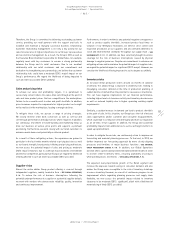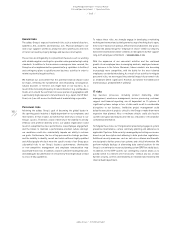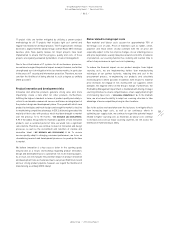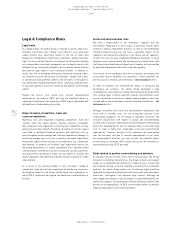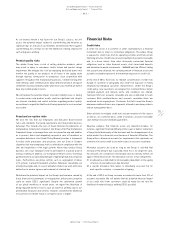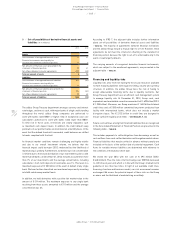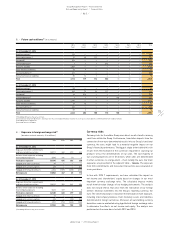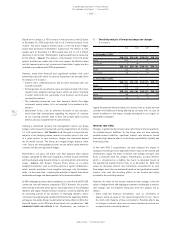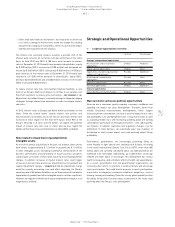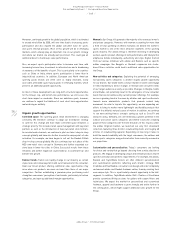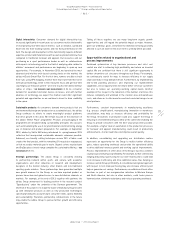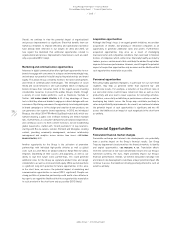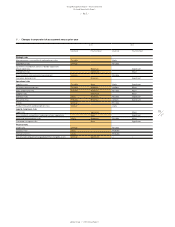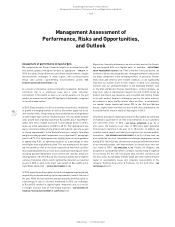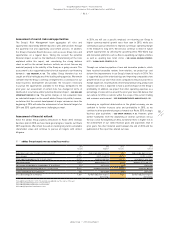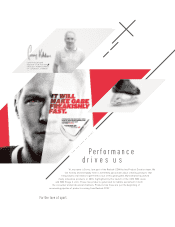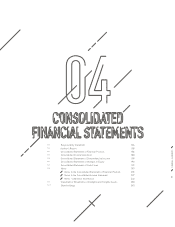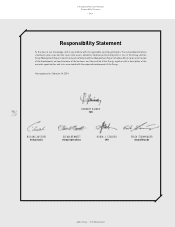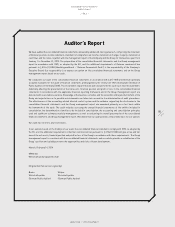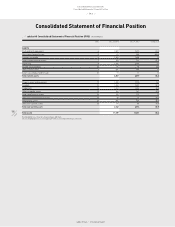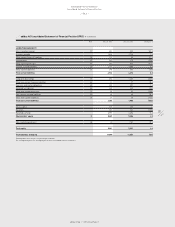Reebok 2013 Annual Report Download - page 181
Download and view the complete annual report
Please find page 181 of the 2013 Reebok annual report below. You can navigate through the pages in the report by either clicking on the pages listed below, or by using the keyword search tool below to find specific information within the annual report.
adidas Group
/
2013 Annual Report
Group Management Report – Financial Review
177
2013
/
03.5
/
Risk and Opportunity Report
/
Strategic and Operational Opportunities
Digital interactivity: Consumer demand for digital interactivity has
increased significantly in recent years as consumers realise the benefits
of incorporating real-time data on metrics such as distance, speed and
heart rate into their training routines and into their performance on the
field. The design and development of this functionality requires different
expertise, product and material research as well as production know-how
compared to traditional footwear and apparel. Our resources and our
positioning as a sport performance leader as well as collaborations
with experts in technology and in the field of analysing data related to
athletes’ movement and performance are beginning to open up new
opportunities. For example, in November 2013, we launched the most
advanced and intuitive wrist-based running device on the market, the
adidas miCoach Smart Run. For the first time, runners are able to track
their runs using GPS mapping, monitor their heart rate from their wrist
with optical technology, listen to their favourite music and get real-time
coaching by our miCoach system – all in one touchscreen device without
cables or straps
/
SEE RESEARCH AND DEVELOPMENT, P. 99. As consumer
demand for wearable functional devices increases, and with further
advances in technology, we expect this market could offer significant
potential and opportunities as we continue to invest to drive credibility
in the space.
Sustainable products: As consumers demand more products that are
environmentally benign and produced on a sustainable basis, the adidas
Group continues its efforts to create meaningful product platforms
that drive growth in this area. We remain focused on the extension of
the adidas ”Better Place” programme. Products and packaging in the
programme are designed taking sustainability principles into account,
such as broadening the use of recycled materials and monitoring energy
use in material and product preparation. For example, in September
2013, adidas by Stella McCartney introduced its spring/summer 2014
collection that incorporated sustainable elements wherever possible.
Advanced, eco-friendly cutting techniques ensure 95% of fabric used
creates the final product, with the remaining 5% recycled or repurposed,
so that no surplus material goes to waste. Organic cotton, recycled yarn
and DryDye pieces in each range complete the sustainable offering
/
SEE
SUSTAINABILITY, P. 111.
Strategic partnerships: The adidas Group is constantly evolving
its partnership network within sports and culture, with academic
organisations and other industries in research and development,
designers in the fashion industry, other brands and non-traditional
sporting goods retailers. These partnerships have generated multiple
new growth avenues for the Group, as we have acquired product or
process know-how and gained access to new distribution channels or
markets. For example, at the end of 2013, together with partners the
adidas Group announced its leading position in the research project
“Speedfactory” under the umbrella of the German government. The
intention of this project is to shape the future of manufacturing and come
up with innovative products as well as new production technologies
specifically taking into account future consumer needs, speed, flexibility
and sustainability. Therefore, partnership collaborations in the future
may enable the adidas Group to pursue further growth and efficiency
opportunities.
Taking all these together, we see many long-term organic growth
opportunities and still regard the potential impact as major. However,
given our ambitious goals, we believe the likelihood of being positively
affected to such an extent in the short term is unlikely (2012: possible).
Opportunities related to organisational and
process improvements
Continued optimisation of key business processes and strict cost
control are vital to achieving high profitability and return on invested
capital. We are confident that there is still significant opportunity to
further streamline cost structures throughout our Group. For example,
we continuously search for ways to increase efficiency in our supply
chain and make it truly demand-driven. Furthermore, by implementing
end-to-end planning processes and improving our replenishment
capabilities, we see opportunities not only to better serve our customers
but also to reduce our operating working capital needs. Another
example in this respect is the reduction of the number of articles; this
reduces complexity and workload in the creation area and warehouse
costs, and allows us to offer more focused and consistent ranges to our
retail partners.
Furthermore, constant improvements in manufacturing excellence
(e.g. process simplification), manufacturing innovation or warehouse
consolidation, may help us increase efficiency and profitability for
the Group. Innovations in production could also support the Group in
reducing its environmental impact, while at the same time enabling the
Group to provide consumers with the best value proposition possible.
For example, a higher level of automation in the production processes
for footwear and apparel manufacturing could result in productivity
enhancements, shorten lead times and improve overall quality.
In addition, consolidating and upgrading our distribution centres
represents an opportunity for the Group to realise further efficiency
gains, reduce operating overheads and provide the operational ability
to drive additional revenue growth and working capital improvements.
Process improvements in other areas of the Group’s business activities
could also positively impact profitability. For example, further centralising
ranging and product purchasing for our own-retail business could lead
to an increase in efficiency and drive additional sales, thus helping us
increase overall Group profitability. A consolidated and global approach
with respect to non-trade purchasing may also increase efficiency and
help us generate cost savings. Furthermore, consolidation of back-office
functions as part of our reorganisation initiatives in Western Europe
and North America, but also in other markets, could foster process
harmonisation, eliminate redundancy and reduce operating overheads.


